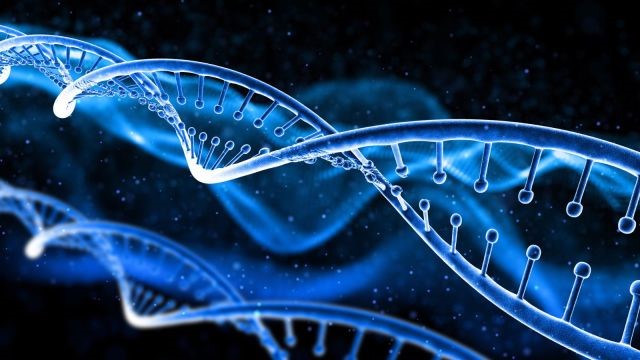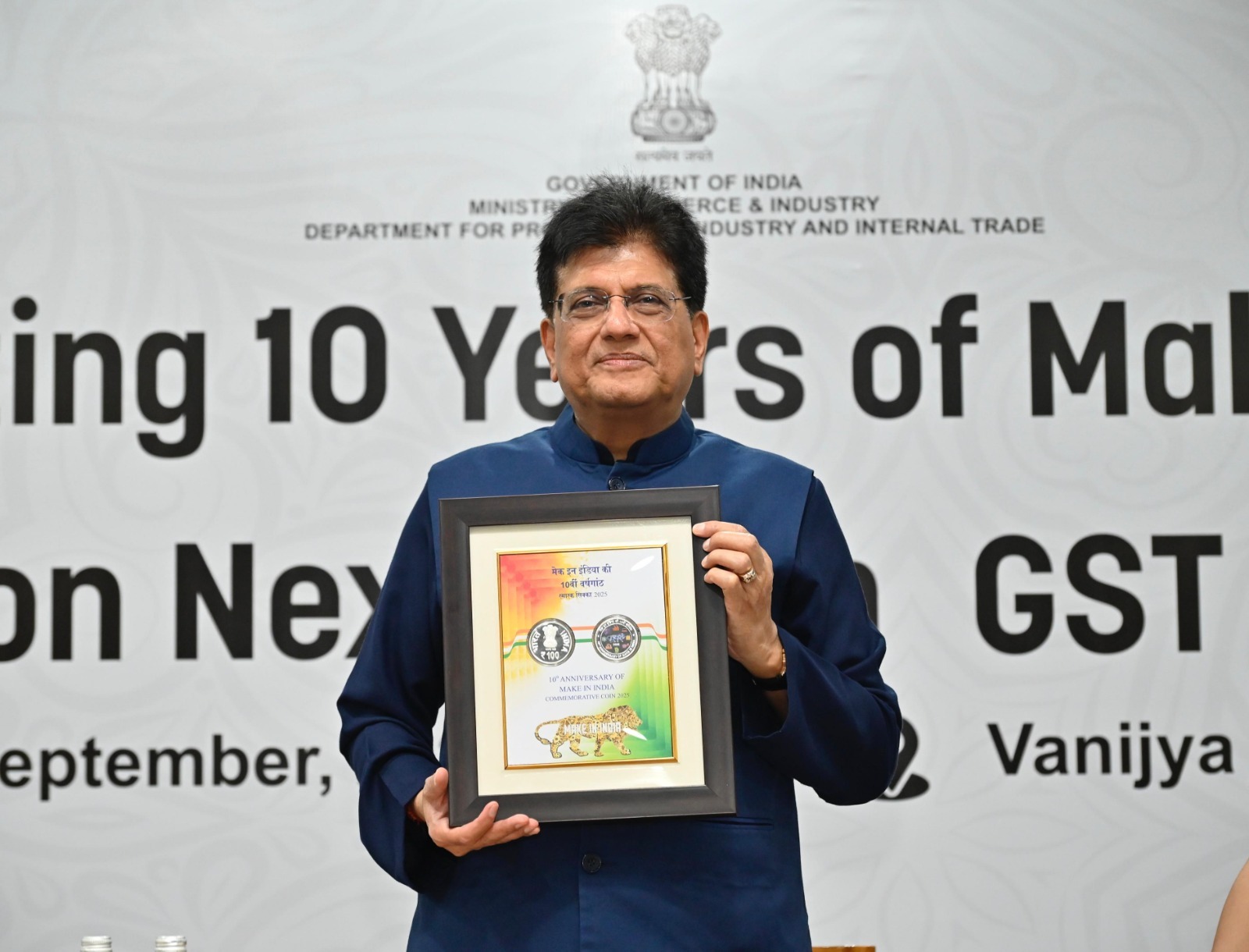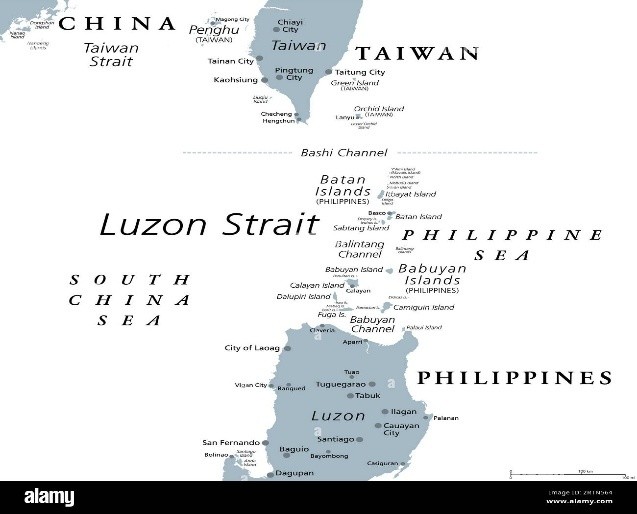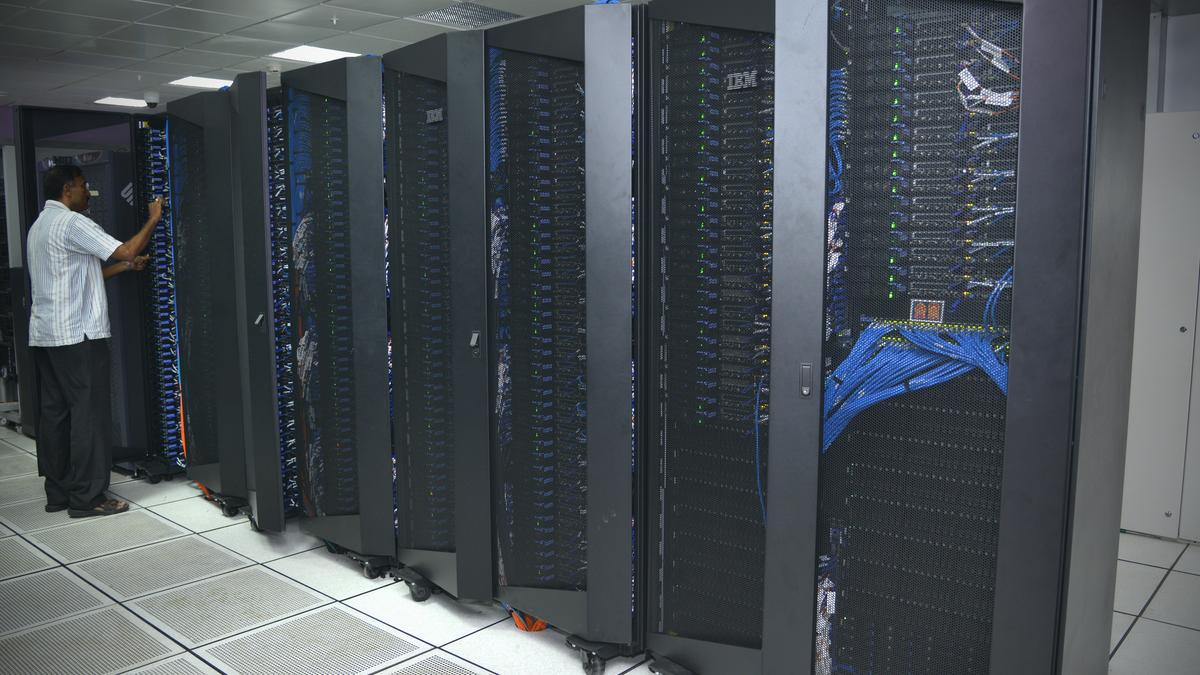World’s 1st Functioning AI-designed Viral Genome

- 26 Sep 2025
In News:
Scientists at Stanford University and the Arc Institute have created the world’s first artificially designed viral genome using Artificial Intelligence (AI), marking a major milestone in computational biology and synthetic genomics. The breakthrough demonstrates AI’s capability to generate an entirely new and functional virus—one that can infect and kill bacteria.
About the Discovery
The AI-generated virus was designed using a genomic model called Evo, which functions like a “language model” for DNA. Evo was trained on nearly two million viral genomes, learning the patterns and grammar of genetic sequences—akin to how language models learn human syntax and semantics.
The model was guided to mimic the bacteriophage ΦX174 (phi-X-174), a virus that infects E. coli bacteria. This phage was chosen because:
- It has a small yet complex genome (about 5,386 DNA letters and 11 overlapping genes).
- It was the first genome ever sequenced (1977) and the first synthesized from scratch (2003)—now it is the first AI-designed genome.
How It Was Done
- Training the AI: Evo was trained on millions of viral sequences to understand gene order, composition, and regulatory logic.
- Design Phase: Using prompts, Evo generated thousands of potential genome designs.
- Screening & Testing: Researchers filtered these using software checks to ensure each genome contained the necessary genes and functional proteins.
- Lab Validation: Hundreds of genomes were synthesized and inserted into E. coli bacteria. Out of 302 attempts, 16 fully functional viruses emerged.
- Results:
- These viruses contained over 392 mutations never seen in nature.
- Some designs achieved functions human scientists had failed to engineer, such as borrowing DNA-packaging proteins from unrelated viruses.
- Cryo-electron microscopy confirmed the structural integrity of these AI-designed proteins within the viral shell.
What is a Virus?
A virus is a microscopic infectious agent made of nucleic acid (DNA or RNA) enclosed within a protein coat (capsid).
- It cannot replicate independently and must hijack a host cell’s machinery to reproduce.
- Many viruses cause diseases like COVID-19, AIDS, measles, and smallpox.
What is a Genome?
The genome is the complete set of DNA instructions in an organism.
- In humans, it comprises 23 pairs of chromosomes in the nucleus plus mitochondrial DNA.
- It encodes all genetic information required for growth, development, and functioning.
Significance of the Breakthrough
- Redefining Synthetic Biology:The experiment represents a leap from reading and writing genomes to designing them. AI is now capable of generating entirely new, functional genetic blueprints.
- Advancing Phage Therapy:The AI-designed bacteriophages could revolutionize phage therapy—the use of viruses to target and kill antibiotic-resistant bacteria, a major global health threat.
- Accelerating Biotechnology:This development showcases how AI can drastically accelerate genetic innovation, enabling rapid design and testing of new biological entities.
- Proof of Concept for AI-Driven Evolution:AI-generated viruses adapted to bacterial defenses faster than natural ones, indicating potential for directed evolution through computational models.
- Ethical and Regulatory Implications:While promising, the creation of new synthetic organisms underscores the need for global biosafety, biosecurity, and ethical frameworks to govern AI-driven genetic design.
High Seas Treaty of UN Reaches Entry into Force Threshold
- 26 Sep 2025
In News:
- The Biodiversity Beyond National Jurisdiction (BBNJ) Treaty, also known as the UN High Seas Treaty, has crossed the crucial threshold of 60 ratifications, enabling it to enter into force on January 17, 2026. With Morocco and Sierra Leone becoming the 60th and 61st ratifying nations, this milestone marks a historic step in the global conservation of marine biodiversity in international waters.
- So far, 143 countries, including India, have signed the treaty, reflecting strong international consensus on protecting marine ecosystems that lie beyond national boundaries.
About the BBNJ Treaty
- Full Name:Agreement under the United Nations Convention on the Law of the Sea on the Conservation and Sustainable Use of Marine Biological Diversity of Areas Beyond National Jurisdiction (BBNJ).
- Parent Framework: Builds upon the UN Convention on the Law of the Sea (UNCLOS), adopted in 1982 and effective since 1994 — often called the “Constitution for the Oceans”.
- Geographical Scope: Applies to areas beyond 200 nautical miles from the Exclusive Economic Zones (EEZs) of coastal nations, commonly referred to as the high seas.
- Coverage: These high seas account for nearly two-thirds of the global ocean and cover over 70% of the Earth’s surface, yet currently, only 1.44% are under any form of protection.
Objectives and Key Provisions
The BBNJ Treaty seeks to conserve and sustainably use marine biodiversity in areas beyond national jurisdiction through legally binding measures. Its major provisions include:
- Creation of Marine Protected Areas (MPAs):
- Aims to designate and manage MPAs in international waters.
- Currently, 6.35% of the ocean is protected, with only 1.89% designated as no-take MPAs, where all extractive activities such as fishing, mining, and drilling are prohibited.
- This aligns with the Kunming-Montreal Global Biodiversity Framework target of protecting 30% of global land and sea areas by 2030 (30x30 goal).
- Equitable Sharing of Marine Genetic Resources (MGRs):
- Establishes mechanisms to ensure fair and equitable distribution of benefits derived from marine genetic resources — biological materials such as microorganisms, plants, and animals with applications in pharmaceuticals and biotechnology.
- Mandatory Environmental Impact Assessments (EIAs):Mandates EIAs for high-impact activities like deep-sea mining, carbon sequestration, and bioprospecting in international waters to mitigate potential ecological harm.
- Scientific Cooperation and Technology Transfer:Encourages capacity building, data sharing, and technology transfer to support developing nations in ocean research and sustainable marine resource management.
Process for the Treaty’s Entry into Force
- Condition: The BBNJ Treaty enters into force 120 days after the deposit of the 60th instrument of ratification, approval, or accession.
- Implementation Date: Given the 60th ratification milestone was achieved in September 2025, the treaty will legally come into effect on January 17, 2026.
- Next Steps:
- Preparatory Commission (PrepCom): Tasked with operationalizing the treaty by establishing scientific and technical bodies, expert qualifications, and procedural frameworks for reviewing MPA proposals.
- First Conference of Parties (COP1): Will convene post-entry into force to initiate formal implementation. Key agenda items include governance mechanisms, financial arrangements, and the Clearing-House Mechanism for information exchange.
India’s Role and Strategic Interests
- India’s Involvement:
- The Union Cabinet approved India’s signing of the BBNJ Treaty in July 2024.
- India is among the 143 signatories, signaling commitment to sustainable ocean governance.
- Strategic Significance for India:
- Enhanced Oceanic Presence: Expands India’s strategic and scientific footprint beyond its Exclusive Economic Zone (EEZ).
- Scientific Research: Facilitates participation in global marine research, access to marine genetic resources, and technological collaboration.
- Alignment with SDG-14: Advances India’s commitment to Sustainable Development Goal 14 – “Life Below Water”, which seeks to conserve and sustainably use ocean resources.
- Diplomatic and Environmental Leadership: Positions India as a responsible stakeholder in global commons management and strengthens its environmental diplomacy credentials.
Assessment of Logistics Cost in India

- 26 Sep 2025
In News:
- On the occasion of a decade of “Make in India”, the Union Minister of Commerce and Industry, Shri Piyush Goyal, launched the report on Assessment of Logistics Cost in India in September 2025.
- This marks the first scientifically derived national estimate of logistics costs, aligning with the objectives of the National Logistics Policy (NLP), 2022, to make India’s logistics sector globally competitive, data-driven, and cost-efficient.
About the Report
- Prepared by: Department for Promotion of Industry and Internal Trade (DPIIT) and the Department of Commerce.
- Methodology: Uses a hybrid approach, combining secondary data analysis with nationwide enterprise surveys to ensure scientific estimation.
- Objective: To establish a uniform national framework for measuring logistics costs and benchmarking them with global standards, in line with the NLP (2022).
Key Findings
- Logistics Cost Estimate (2025): Around 7.97% of India’s GDP.
- Previous Estimates: Older, often-cited figures of 13–14% of GDP were based on partial or external datasets, leading to inconsistent policy assessments.
- Trend Analysis: Over the past five years, logistics cost growth has slowed relative to non-services output, indicating improved sectoral efficiency.
Significance
This assessment provides evidence-based guidance for:
- Policy formulation on logistics modernization.
- Competitiveness enhancement of Indian exports.
- Strategic inputs for Free Trade Agreement (FTA) negotiations through the mapping of HSN codes to respective ministries.
- Development of logistics data banks and state logistics plans under the SMILE Programme (with ADB support).
Achievements and Improvements in India’s Logistics Sector
- Improved Global Ranking:India ranked 38th out of 139 countries in the 2023 World Bank Logistics Performance Index (LPI), up by six positions from 2018.
- Infrastructure Expansion:
- Cargo through Inland Waterways (2024–25):145.5 million tonnes.
- Operational National Waterways: Increased from 24 to 29.
- Digital Integration:
- Unified Logistics Interface Platform (ULIP): Consolidates logistics data across ministries, recording over 100 crore API transactions (2025).
- Facilitates end-to-end visibility and efficiency in multimodal logistics.
- Human Resource Development:Gati Shakti Vishwavidyalaya (GSV): India’s first logistics-focused university, has signed 40 MoUs with industry and academia to develop skilled manpower for transport and supply chain sectors.
Key Government Initiatives Driving Efficiency
1. PM GatiShakti National Master Plan (2021)
- Integrates 57 ministries/departments and all States/UTs on a digital GIS platform.
- Enables coordinated infrastructure planning acrossroads, railways, ports, airports, and inland waterways.
2. Dedicated Freight Corridors (DFCs)
- Two major DFCs under development by Indian Railways to:
- Ease congestion on passenger routes.
- Reduce freight cost and transit time.
- Improve energy efficiency and modal balance.
3. Multi-Modal Logistics Parks (MMLPs)
- 35 strategic locations approved (e.g., Chennai, Bengaluru, Nagpur, Indore).
- Five parks expected to become operational by 2027, promoting multimodal transport and value-added logistics services.
4. Maritime Amrit Kaal Vision 2047
- Long-term blueprint aligned with Blue Economy principles.
- Focuses on shipbuilding, coastal tourism, port-led development, and maritime skill-building to position India as a global maritime hub.
5. Sustainability and Green Initiatives
- Freight GHG Calculator: Estimates and compares transportation emissions to support eco-friendly logistics decisions.
- Rail Green Points: Helps freight customers assess carbon savings when using rail instead of road transport.
Challenges in India’s Logistics Sector
- High Logistics Cost (Legacy Issue): Historically estimated at 13–14% of GDP—higher than global benchmarks (8–9%).
- Infrastructure Gaps: Deficiency in warehousing, cold chain, and last-mile connectivity.
- Overdependence on Road Transport: Causes congestion, higher costs, and carbon emissions.
- Limited Multimodal Integration: Underutilization of railways and inland waterways for freight.
- Environmental Impact: Diesel-based trucking remains a major source of logistics-related emissions.
Objectives of the National Logistics Policy (NLP) 2022
- Reduce logistics cost to below 10% of GDP.
- Improve India’s LPI ranking to Top 25 by 2030.
- Build a robust, data-driven logistics decision-support system.
- Promote multimodal connectivity, sustainability, and ease of doing business.
Way Forward
- Integrated Infrastructure: Expansion of GatiShakti corridors and MMLPs to enable seamless multimodal movement.
- Digital Logistics Ecosystem: Wider adoption of ULIP, AI-driven route optimization, and e-logistics tracking.
- Green Logistics: Shift towards rail and waterways, adoption of electric and LNG-based freight vehicles, and GHG monitoring tools.
- Skill Development: Strengthening logistics education via GSV and industrial-academic partnerships.
- Policy Consistency: Periodic, data-backed cost assessments to guide long-term logistics and trade policy decisions.
Super Typhoon Ragasa

- 26 Sep 2025
In News:
Super Typhoon Ragasa—locally known as Nando—has emerged as one of the most powerful storms to strike Southeast Asia in recent years. With sustained winds exceeding 200 km/h and gusts up to 250 km/h, it has prompted large-scale shutdowns across the Philippines and Hong Kong, highlighting the region’s vulnerability to climate-induced extreme weather events.
About Super Typhoon Ragasa
- Category: 5 (the highest on the Saffir-Simpson scale)
- Wind Speed: Sustained winds of around 205 km/h, gusting up to 250 km/h.
- Origin: Formed over the western Pacific Ocean, where warm sea surface temperatures and low wind shear facilitated rapid intensification.
- Track: Moving northwestward across the Luzon Strait, impacting the Babuyan Islands in northern Philippines before heading toward southern China, including Hong Kong.
Regional and Environmental Significance
- The increasing intensity of storms like Ragasa reflects the broader pattern of climate change-driven extreme weather in the western Pacific region.
- Rising sea surface temperatures and shifting atmospheric circulation patterns have led to more frequent and severe typhoons, posing long-term challenges to disaster preparedness and coastal infrastructure resilience in densely populated regions like Luzon and Hong Kong.
Way Forward
- Strengthening Early Warning Systems: Enhanced forecasting and community-based alert dissemination can save lives in coastal and island regions.
- Climate Adaptation Infrastructure: Investment in storm-resilient housing, flood barriers, and sustainable urban planning is critical for mitigating recurring damage.
- Regional Cooperation: Shared meteorological data and coordinated disaster response among ASEAN nations, China, and Pacific island states can improve resilience.
Supercomputers vs Normal Computers

- 26 Sep 2025
In News:
Supercomputers are the giants of the computing world, built to solve problems far beyond the reach of everyday computers. Unlike normal laptops or desktops, which are designed for routine tasks like web browsing, office work, gaming, or media consumption, supercomputers tackle extremely complex, data-intensive problems—such as weather forecasting, simulating nuclear reactions, modelling the early universe, or training advanced artificial intelligence models.
Key Differences Between Normal Computers and Supercomputers
|
Aspect |
Normal Computers |
Supercomputers |
|
Processing Power |
Billions of operations per second (GFLOPS) |
Quintillions per second (ExaFLOPS); can complete tasks that would take ordinary machines years in just hours |
|
Architecture |
1–16 CPU cores |
Thousands to millions of CPUs and GPUs working in parallel |
|
Memory & Storage |
GB–TB range |
Petabyte-scale storage with parallel file systems |
|
Networking |
Standard Ethernet or Wi-Fi |
Ultra-fast interconnects like InfiniBand or Omni-Path |
|
Cooling & Power |
Small fans, low power consumption |
Liquid or immersion cooling; power requirements comparable to a small town |
|
Use & Access |
Direct individual use |
Remote access via job schedulers for research institutions and industrial applications |
India’s Supercomputing Initiative
- India’s journey in high-performance computing began in the late 1980s, largely as a response to export restrictions from Western countries. This led to the development of indigenous supercomputing capabilities under the National Supercomputing Mission (NSM).
- The mission has given rise to the PARAM series and the newer AIRAWAT supercomputers, positioning India on the global high-performance computing map.
- These systems are designed not just for academic research but also for solving real-world problems in climate modelling, healthcare simulations, and energy research. They exemplify India’s strategic approach to technological self-reliance and digital sovereignty.
Global Supercomputing Race
- Supercomputing has become a key area of technological competition. In Europe, Germany recently commissioned JUPITER, the continent’s first exascale supercomputer, capable of performing more than an exaFLOP (a quintillion calculation per second). This milestone highlights the global drive toward faster, more energy-efficient, and scalable computing infrastructures, with countries investing heavily in next-generation architectures.
Significance for India
For India, supercomputers are not only tools for scientific advancement but also instruments of national development. They support critical sectors such as meteorology, disaster management, nuclear research, and artificial intelligence, enhancing both strategic and developmental capacities. The NSM’s growing network of high-performance machines demonstrates India’s commitment to bridging the technological gap with global leaders.
